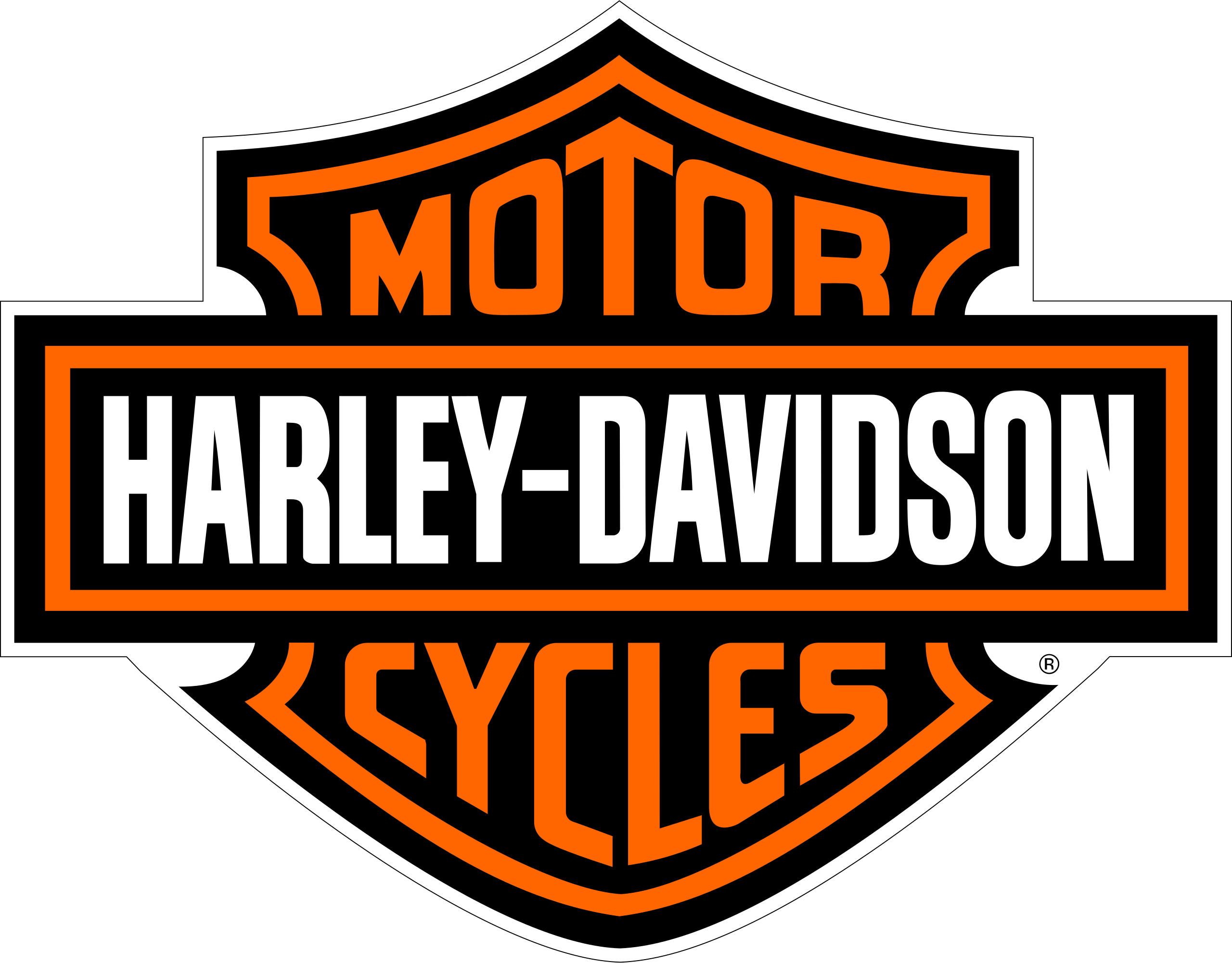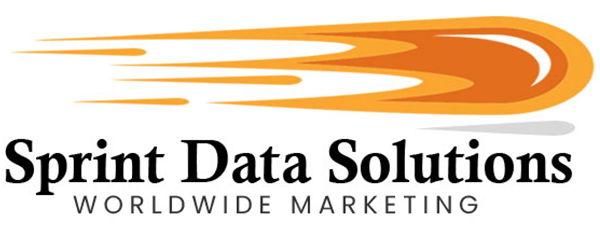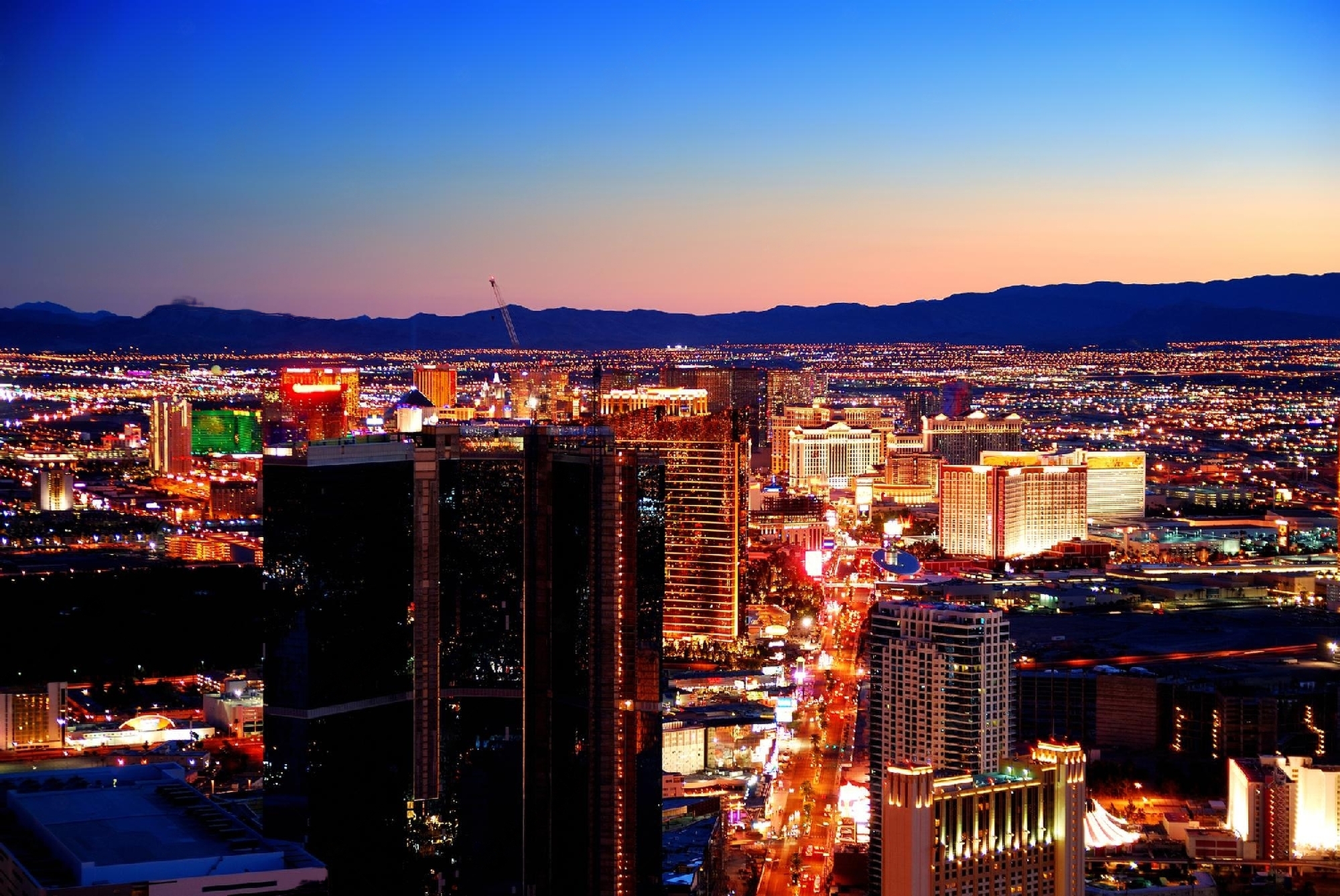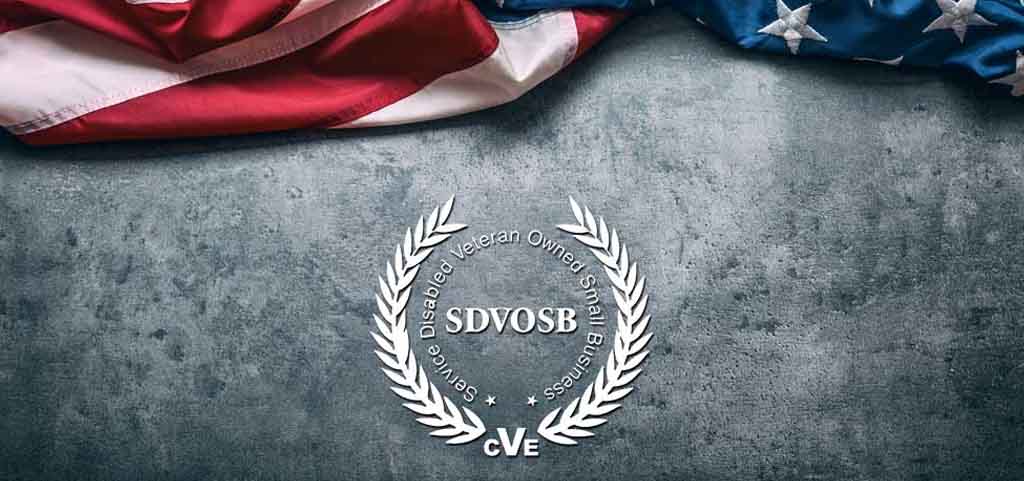Motorcycle Owners Are An Ideal Target Market For Your Business
Motorcycles have long stood as an iconic symbol of American freedom and independence. The feeling of the wind in your face while cruising down open highways, immersing yourself in nature, and exploring the country’s backroads is an experience that resonates deeply with motorcycle enthusiasts. Riders are often seen as rugged individuals who value self-reliance, adventure, and authenticity. They come from all walks of life—entrepreneurs, tradespeople, veterans, and creatives—but they share a passion for the open road and a lifestyle outside the mainstream. Many find community and brotherhood through motorcycle clubs and nationwide events like the legendary Sturgis Motorcycle Rally, while others enjoy the practicality of two-wheeled transportation in congested urban areas. For some, it’s all about the sheer thrill—the adrenaline surge of speed and power.
This vibrant and diverse demographic presents significant and often underutilized marketing opportunities. Motorcycle riders are a highly engaged audience with a strong sense of identity and loyalty to the brands that speak their language. However, their mobile lifestyle makes them harder to reach through conventional marketing channels like television or direct mail. That’s where a targeted motorcycle rider contact list becomes a powerful tool. With accurate, up-to-date contact information, businesses can deliver tailored offers and campaigns directly to these consumers—through email, SMS, or digital outreach—cutting through the noise and making meaningful connections. Whether you’re promoting travel gear, automotive products, lifestyle apparel, insurance, or events, a specialized rider database can be the key to unlocking a high-conversion audience that’s eager for adventure and open to new experiences.

There Are More Motorcycle Riders Than Ever Before
Motorcycle ridership continues to rise steadily across the United States, driven by a combination of lifestyle trends, economic factors, and cultural influence. Breakthroughs in motorcycle technology—including the rise of electric bikes, improved safety features, and smart connectivity—are making riding more appealing and accessible than ever. Meanwhile, the enduring popularity of motorcycle events like Daytona Bike Week, Laconia Motorcycle Week, and the Sturgis Rally, along with the romanticized portrayal of biker culture in film and television, has helped reinforce the motorcycle as a symbol of freedom, rebellion, and personal expression. Economic practicality is also a major motivator: in an era of rising fuel costs and urban congestion, motorcycles offer a cost-effective and efficient alternative to cars. Their relatively low price point and excellent fuel economy make them a smart choice for both urban commuters and long-distance travelers alike.
Analysts agree that the motorcycle industry is positioned for robust growth well into the next decade. In 2021, the global motorcycle market was valued at $105.5 billion and is projected to more than double to $233.5 billion by 2031, reflecting a compound annual growth rate (CAGR) of 8.6%. If these projections hold, the number of active riders is expected to double, echoing the trend of the past two decades. For instance, in the United States, motorcycle ridership climbed from 4.3 million in 2002 to 8.6 million in 2022—effectively doubling within 20 years. With increasing demand for both traditional and electric motorcycles, this trajectory is set to continue upward.
Demographics of Motorcycle Riders
Motorcycle riders span virtually every demographic group legally eligible to ride, but several defining characteristics help shape the profile of the average American rider. According to industry data, approximately 81% of motorcycle riders are male, while 19% are female—though female ridership is one of the fastest-growing segments. The median age of riders is around 50 years old, reflecting the strong presence of Baby Boomers and Gen Xers in the community. However, Millennials are showing the most dynamic growth, especially drawn to modern designs, electric models, and the sustainable lifestyle that motorcycling can offer.
Married individuals comprise about 70% of the rider base, and the population is highly educated: 42% hold a four-year college degree, and 16% have completed postgraduate studies. Employment rates are high among riders, with 71% working full time and an average household income of approximately $85,300 per year. Notably, 24% of riders are retired, using their increased free time to embrace the freedom of the open road. Younger generations, particularly eco-conscious Millennials and Gen Zers, are gravitating toward electric motorcycles, reshaping the market with new expectations around sustainability, technology integration, and urban mobility.
This evolving demographic landscape presents valuable insights and opportunities for marketers, manufacturers, and service providers looking to engage a loyal, affluent, and growing audience.
California leads the nation in motorcycle ownership, boasting over 800,000 registered motorcycles, thanks to its year-round riding weather, scenic highways, and strong motorcycle culture. However, when it comes to motorcycles per capita, South Dakota tops the list, with 1 in every 12 residents owning a motorcycle—unsurprising given the massive draw of the Sturgis Motorcycle Rally. Vermont follows closely, with approximately 1 in 17 people registered as motorcycle owners, reflecting the state’s popularity for rural touring and off-the-grid adventures.
The average rider purchases or registers their first motorcycle at age 26, often marking a transition into adulthood and independence. This early entry contributes to long-term brand loyalty and riding habits that extend through various life stages. Motorcyclists ride for both recreational and practical purposes, covering both on-road and off-road terrain. However, on-road riding is about twice as common, driven by commuters, long-distance travelers, and highway cruisers.
In terms of scale, motorcycles log over 1.5 billion miles on American roads annually, highlighting the significant presence of two-wheeled traffic in the broader transportation ecosystem. This mileage reflects everything from daily urban commutes to cross-country road trips and weekend recreational rides. Advances in gear, GPS technology, and mobile connectivity have also made it easier for riders to track, share, and expand their routes—further reinforcing motorcycle culture as both a lifestyle and community-driven pursuit.
An Ideal Target Market For Many Industries
Motorcycle riders represent a dynamic and high-spending consumer group. Their passion for riding goes beyond just bikes—they consistently invest in a wide range of products, services, and lifestyle upgrades that support their on-the-road experience. From performance parts and safety gear to riding apparel and custom modifications, this market is known for its enthusiasm and brand loyalty.
Auto Insurance
Motorcycle riders are constantly on the move, often crossing state lines on road trips, commutes, or weekend adventures. As a result, they need motorcycle insurance policies that offer broad protection and flexibility, regardless of where they ride. At a minimum, most riders carry the standard liability coverages: bodily injury (BI) to cover injuries caused to others, and property damage (PD) for damage to vehicles or property. Uninsured/underinsured motorist (UM/UIM) coverage is also essential, protecting riders in case they’re hit by someone with insufficient or no insurance.
For those with newer, custom-built, or high-value motorcycles, comprehensive and collision coverage—often referred to as “full coverage”—is strongly recommended. These policies protect against theft, vandalism, natural disasters, and accidents regardless of fault. In several states, riders are also legally required to carry Medical Payments (MedPay) or Personal Injury Protection (PIP), which cover medical expenses for the rider and passengers. Even in states where it’s optional, these benefits provide crucial financial support in the event of injury.
Additionally, many riders opt for specialized add-on coverages that reflect their mobile lifestyle and investment in their bike. Popular options include roadside assistance, trip interruption insurance (which covers lodging and transportation if a trip is disrupted), carried contents coverage for personal belongings, and Custom Parts & Equipment (CPE) protection to safeguard aftermarket upgrades like chrome accessories, saddlebags, custom paint, and performance parts.
Life Insurance
While motorcycling is a thrilling and freeing experience, it does carry an element of risk. Each year, approximately 5,000 motorcyclists lose their lives in crashes, highlighting the importance of financial preparedness. With nearly 75% of riders having spouses and children, protecting their family’s financial future is a top priority. Life insurance is a critical tool in this regard, offering peace of mind that loved ones will be supported in the event of a tragedy. Term life and whole life policies are commonly sought after by riders who want to leave behind a safety net.
Additionally, riders involved in competitive racing—both amateur and professional—face even greater risks and can benefit from supplemental insurance products. These may include accidental death and dismemberment (AD&D) coverage, disability insurance, and high-risk activity riders to standard life policies. Insurance providers catering to this niche can meet a real need in the motorcycling community by offering tailored, comprehensive solutions that reflect the unique lifestyle and risk profile of riders.
Travel
The travel and tourism industry stands to gain significantly by engaging with motorcycle enthusiasts. Riders are known for their love of the open road and scenic routes, often seeking out lesser-known destinations that showcase the beauty, history, and character of the American landscape. Popular travel interests include natural wonders, historical landmarks, cultural heritage sites, and iconic roadside attractions. Tourism operators, local municipalities, and travel-focused businesses can all tap into this adventurous demographic with targeted promotions and packages.
Motorcyclists are also enthusiastic consumers when it comes to souvenirs, tours, and travel experiences. They frequent state and national parks, historic battlefields, Route 66 landmarks, local festivals, and museums—making them ideal visitors for destinations focused on Americana, heritage, and natural beauty.
The hospitality sector, too, can benefit from understanding rider preferences. While some riders favor camping and rustic outdoor experiences like backcountry campsites, BLM lands, and KOA-style accommodations, many others seek comfortable and rider-friendly lodging. These include hotels, motels, boutique inns, short-term rentals, and resorts that offer amenities such as secure motorcycle parking, spacious rooms for group travel, complimentary breakfasts, and spa or wellness services. Establishments that provide bike-washing stations, gear storage, and ride-planning tools are especially popular with touring groups.
Smart Devices
Today’s riders leverage a growing ecosystem of connected technology to make every journey safer, smoother, and more enjoyable. Bluetooth communication systems now integrate seamlessly with full‑face and modular helmets, allowing group intercom, voice-activated phone calls, and music streaming without taking hands off the handlebars. Turn-by-turn GPS units—whether standalone or app-based—offer glove-friendly touchscreens, real-time weather alerts, and automatic rerouting to avoid traffic or road closures. Where cell coverage drops, riders rely on satellite messengers and SOS beacons for emergency communication.
Modern bikes also benefit from a suite of maintenance-monitoring gadgets. Compact tire pressure monitoring systems (TPMS) screw directly onto valve stems, alerting riders to pressure loss via smartphone. Plug-and-play OBD-II dongles display engine codes and performance metrics directly on the dash. Portable lithium jump-starters, mini air compressors, and smart battery tenders keep bikes road-ready after periods of inactivity. On the comfort and recording front, riders love heated jacket liners, action cameras with 360-degree stabilization, and high-capacity USB-C power banks for off-grid charging. All these devices must be rugged, weather-resistant, and operable with gloves—ideal traits for the modern motorcyclist.
Mechanical Tools & Accessories
Self-reliance is part of the motorcycling mindset, and many riders carry a compact tool arsenal for quick roadside repairs. Roll-up tool kits containing metric hex keys, wrenches, ratchets, and tire-plug tools are popular for their portability and convenience. Additional essentials include torque wrenches for precise adjustments, motion-pro tire irons with bead breakers, and compact inflators using CO₂ or manual pumps.
At home or in the garage, riders rely on a broader set of tools: rear-wheel stands or hydraulic lift tables for service access, chain breakers and rivet tools for drivetrain work, and digital or laser chain-alignment tools to ensure smooth performance. Specialized sockets help with fork caps, axle nuts, and spark plugs unique to motorcycle engines.
Consumables are also critical. High-performance synthetic engine oils, multi-grade fork fluids, ceramic chain lubricants, and DOT-specific brake fluids keep bikes running at peak condition. Storage systems like magnetic tank bags with tool organizers or lockable panniers with foam inserts are great for organizing and protecting gear on long-distance rides.
Storage
Motorcycle riders—particularly those in colder northern climates or off-road enthusiasts—often require reliable storage solutions during the off-season or between trail rides. In regions where riding is seasonal, many motorcyclists rent secure storage units to protect their bikes from the elements and theft. Climate-controlled units are especially valued for preventing corrosion and damage from humidity or extreme temperatures. Riders also invest in practical accessories such as dust covers, oil drip pans, wheel chocks, and motorcycle jacks to stabilize and preserve their machines while in storage.
For owners of collectible, vintage, or high-end custom motorcycles, storage security is paramount. These riders seek facilities with advanced features such as 24/7 video surveillance, biometric entry, private enclosed bays, and motion detection alarms. Some even seek concierge-style storage services that offer battery maintenance, fuel system care, and periodic bike checks. This segment represents a high-value opportunity for storage providers who can meet the unique needs of motorcycle owners with tailored, high-security solutions.
Motorcycle Apparel
Motorcyclists depend on a broad range of specialized apparel that blends protection, performance, and style. Essential safety gear includes DOT or ECE-certified helmets, armored jackets with impact protection, abrasion-resistant gloves, reinforced riding pants, and over-the-ankle boots. These pieces not only provide protection during a crash but also shield against wind, rain, sun exposure, and road debris during long rides.
In addition to safety apparel, riders often purchase gear for comfort and climate control. Items like moisture-wicking base layers, insulated long underwear, neck gaiters, balaclavas, and skull caps help regulate temperature on long tours or in unpredictable weather. Riders are also style-conscious—many enjoy expressing their identity through casual motorcycle-themed clothing like graphic tees, leather vests, rugged denim, and branded outerwear.
Utility gear is also popular, especially tactical-style jackets and pants with multiple pockets, hydration pack compatibility, and hidden tool compartments. And with so much gear to manage, riders also need accessories for organizing their apparel off the bike—such as helmet stands, glove dryers, boot racks, and garment bags that make it easy to pack for extended trips.
Motorcycle Parts
Motorcycle riders are passionate about expressing their individuality, and customization is a major part of the culture. Whether upgrading for performance, comfort, or safety, aftermarket motorcycle parts remain in high demand. Popular upgrades include high-flow air filters, performance exhaust systems, suspension kits, and ergonomically designed seats tailored to long-distance riding or urban commuting.
A significant portion of the riding community consists of DIY mechanics, hobbyists, and professional builders who prefer handling their own maintenance and repairs. These riders actively seek high-quality components such as brake pads, clutch kits, chains, spark plugs, and engine internals. There is also a thriving market for vintage and classic motorcycle parts, supporting enthusiasts who restore older bikes from brands like Harley-Davidson, Honda, BMW, and Triumph. The vintage restoration segment values authenticity, availability, and compatibility, creating opportunities for specialized parts suppliers.
Motorcycle Accessories
Motorcycle accessories serve both functional and aesthetic purposes, making them a key category among riders. Essential functional accessories include GPS mounts, mobile phone holders, USB charging ports, auxiliary lights, kickstand plates for soft terrain, and anti-theft alarms. Touring and adventure riders also invest in luggage systems, saddlebag racks, crash guards, and heated handgrips for enhanced comfort and utility on longer rides.
Riders also enjoy expressing personality through humorous or themed accessories like helmet toppers, novelty valve stem caps, custom decals, and license plate frames. Off the bike, they often purchase lifestyle gear such as keychains, mugs, patches, and bumper stickers that align with the motorcycle community ethos. These small items help strengthen the sense of identity and camaraderie among riders, making them popular add-ons or gift options.
Cleaning Supplies
Motorcycle owners take great pride in maintaining the look and performance of their machines. Cleaning is not just about appearance; it’s also about extending the lifespan and functionality of various components. Riders rely on a range of tools such as microfiber towels, detailing brushes, chain scrubbers, and foam cannons to keep every part of the bike in pristine condition.
Highly sought-after cleaning products include motorcycle-safe soaps, chrome and metal polish, chain degreasers, tire and wheel cleaners, quick wax sprays, and bug and tar removers. Enthusiasts often go further with leather conditioners, visor anti-fog treatments, matte finish cleaners, and engine degreasers. Many riders build full detailing kits tailored specifically to their bike’s finish and features, making cleaning supplies a staple market with consistent demand throughout the riding season.

Harley Davidson Motorcycle Riders And More!
Harley-Davidson remains the most dominant motorcycle manufacturer in the United States, holding the top spot with a commanding 30.6% market share. Its heritage of American craftsmanship, cruiser styling, and brand loyalty have made it a cultural icon. Honda follows as the second most popular motorcycle brand in the U.S., capturing 17.5% of the market, thanks to its reliability, affordability, and wide range of models suited for every rider. Yamaha comes in third at 11.3%, known for its performance bikes, sport-touring options, and innovation. Other key players in the U.S. market include Kawasaki, Suzuki, and BMW, all of which maintain a solid presence with diverse offerings ranging from sport bikes to adventure touring machines.
Rounding out the top ten motorcycle brands by popularity in the U.S. are Indian Motorcycle, a revived American classic known for premium cruisers; Ducati, an Italian powerhouse famed for high-performance sport bikes; Triumph, the British brand with a rich racing history and modern classic appeal; and Moto Guzzi, an Italian favorite with a strong following for its distinct transverse V-twin engines and retro styling. Globally, the Honda Super Cub holds the title of the most popular motorcycle of all time, with over 100 million units sold, proving its legendary status in both commuter and recreational markets.
Our proprietary motorcycle rider list includes riders of every major brand and style, offering detailed data beyond just contact information. Each entry provides specifics on the rider’s motorcycle, including the year, make, model, and Vehicle Identification Number (VIN). This granular level of detail allows marketers to segment campaigns by bike type, value, and owner behavior—resulting in higher relevance and engagement.
The Different Types of Motorcycle Riders
Broadly speaking, motorcycle riders fall into two primary categories. The first group comprises those who rely on motorcycles as their primary mode of transportation. These riders typically reside in warmer climates or densely populated urban areas, where motorcycles provide a cost-effective and nimble commuting option. For them, efficiency, durability, and fuel economy are top priorities.
The second group consists of recreational or weekend riders. These individuals usually commute by car during the week and ride for leisure during weekends and vacations. They are often located in cooler climates or suburban and rural regions and view motorcycling as a lifestyle or hobby. These riders tend to invest more in customization, premium gear, and long-distance touring accessories.
Motorcycle enthusiasts are incredibly diverse, and no single brand defines the community. While Harley-Davidson may lead, there are large, passionate communities built around Indian, Honda, Ducati, Yamaha, Triumph, and many others. Motorcycles have grown so popular that distinct subcultures have emerged around various types of bikes, each with its own identity, style, and preferences.
These subcultures include:
Choppers, Cruisers, and Lowrider Riders
Choppers, cruisers, and lowriders represent some of the most iconic and visually distinctive styles in the motorcycle world. These bikes are almost always customized—often built piece by piece—and tend to cost significantly more than standard showroom models. Featuring an elongated wheelbase, these bikes provide exceptional comfort for highway riding, though they typically sacrifice tight-turn agility. Riders of these machines are often deeply skilled in both riding and mechanics, taking pride in building, maintaining, and customizing their own bikes.
These riders often align with the traditional motorcycle lifestyle, heavily influenced by American pop culture, mid-century design, and the post-war biker movement. Many are active in motorcycle clubs or riding groups and make annual pilgrimages to major motorcycle events such as Sturgis Motorcycle Rally, Daytona Bike Week, and Laconia Motorcycle Week. Their bikes often feature custom paintwork, chrome details, ape-hanger handlebars, and throwback design elements that reflect the golden age of motorcycling. For these riders, motorcycling is not just a hobby—it’s a deeply rooted cultural expression of freedom, brotherhood, and Americana.
Touring and Sport-Touring Riders
Touring and sport-touring motorcycles are purpose-built for riders who love to cover long distances in comfort. Touring bikes like the Honda Gold Wing or BMW K1600 come equipped with large fuel tanks, advanced suspension systems, integrated navigation, and plenty of luggage space. Designed for endurance, these bikes provide ample weather protection, ergonomic seating, and enhanced stability—making them ideal for cross-country travel.
Sport-touring motorcycles combine the comfort and utility of a touring bike with the performance of a sport bike, offering sharper handling, a more athletic posture, and better adaptability to varied terrain. Models such as the Yamaha FJR1300 or Kawasaki Concours 14 offer a balanced blend of agility, speed, and touring capability. These bikes often come with upgraded braking systems, electronic riding aids, and customizable ride modes, making them favorites among tech-savvy riders.
Touring and sport-touring riders often ride year-round and use their bikes for both leisure and practical commuting. These machines are popular among professionals, retirees, and long-distance travelers who value comfort, safety, and performance. Because of their advanced features and high-quality components, sport-touring bikes generally carry a higher price tag than standard motorcycles, making them an investment in both functionality and long-term riding pleasure.
Café Racers
Café racers have seen a major resurgence in popularity, particularly among Millennial and Gen Z motorcyclists. Known for their minimalist aesthetic and vintage appeal, these bikes are typically built from affordable, lightweight models such as the Honda CB series, Yamaha XS, or older Triumph and BSA bikes from the 1950s to 1970s. Riders in this segment are often hands-on mechanics who take pride in custom builds, with a preference for specialty tools, custom bodywork, and retro-styled components like clip-on handlebars, rear-set footpads, and single-seat cowls.
The café racer culture draws heavy inspiration from the British “rocker” movement of the 1950s, where riders raced from café to café on stripped-down, high-performance bikes. Today’s café racer enthusiasts carry on that spirit, blending mid-century design with modern reliability, and often match their bikes with vintage-style riding apparel—leather jackets, open-face helmets, aviator goggles, and denim or waxed canvas riding gear. These motorcycles are designed for short-distance, urban riding rather than touring, making them ideal for city dwellers and hobbyists who prioritize style, agility, and craftsmanship over comfort or practicality.
Sport Racers
Sport racers—commonly known as sportbikes—represent the cutting edge of motorcycle performance. With their lightweight frames, aggressive riding positions, and powerful engines, these bikes are engineered for speed, acceleration, and precision handling. Riders in this category often participate in track days, drag races, or amateur circuits, and value aftermarket parts that enhance performance—such as upgraded exhaust systems, suspension kits, racing tires, and ECU tuners.
These bikes, like the Yamaha R1, Kawasaki Ninja ZX series, and Suzuki GSX-R, are rarely chosen for long-distance travel due to their intense riding ergonomics. Instead, they are primarily used for adrenaline-fueled recreation and racing. Riders also pay close attention to aesthetics, frequently investing in custom wraps, aerodynamic fairings, colored LED kits, and high-gloss finishes to personalize their machines.
Because of the high-speed nature of sport riding, safety is a top priority. Sportbike riders often wear advanced protective gear, including full-body racing leathers, reinforced gloves, airbag vests, and track-rated helmets. As a demographic, sport riders skew younger, tech-savvy, and trend-conscious. They’re often early adopters of performance-enhancing tech, smart riding gear, and mobile apps for ride tracking, telemetry, and social sharing—making them an ideal market for both gear manufacturers and technology brands.
Dual Sport And Motocross Riders
Dual sport and motocross riders are among the most adventurous segments of the motorcycle community, spending a majority of their riding time off-road on rugged trails, dirt tracks, and technical terrain. Dual sport motorcycles are designed for both street and off-road use, giving riders the flexibility to commute during the week and explore unpaved paths on weekends. These riders are often based in urban or suburban areas where they can legally ride to off-road destinations.
Motocross riders, by contrast, are more commonly found in rural or exurban environments where they have easier access to open land, motocross parks, and private trails. Many participate in competitive events such as motocross races, hill climbs, supercross, and enduro competitions. Their bikes are lightweight and powerful, built for high jumps, fast corners, and challenging conditions. Unlike dual sport bikes, motocross motorcycles are typically not street-legal and require separate transportation to the riding site.
Most riders in this category are highly skilled mechanics. They often handle their own maintenance, repairs, and modifications, whether upgrading suspension systems, reinforcing frames, or tuning engines for optimal performance. Many also enjoy restoring older models or building custom bikes to match their personal style and performance needs. Specialty parts like reinforced swingarms, aftermarket exhausts, high-performance brakes, and protective skid plates are frequently in demand.
Given the physical risks of off-road riding, safety gear is a top priority. Riders typically wear advanced protective equipment, including full-face helmets, chest and back protectors, elbow and knee guards, padded riding pants, gloves, and rugged off-road boots. Apparel is chosen for both safety and function, with lightweight, breathable fabrics that can withstand the rigors of mud, heat, and extended physical exertion.
These riders are passionate, brand-loyal, and eager to invest in high-quality gear and bike upgrades that enhance performance, safety, and style. For businesses targeting off-road enthusiasts, the dual sport and motocross segment offers significant potential in parts, tools, apparel, and accessories.

We’ll Help You Access This Growing Market
Sprint Data Solutions Worldwide Marketing is a proud Service-Disabled Veteran-Owned business headquartered in Las Vegas, Nevada. Since our founding, we’ve specialized in providing high-performance data solutions designed to help businesses grow through precision-targeted outreach. With one of the most robust and diverse databases in the industry, we offer a wide array of specialty marketing lists tailored to reach niche and high-value audiences. Among our most sought-after resources is our motorcycle riders list, a comprehensive, multi-dimensional data set curated for companies looking to engage this passionate and high-spending demographic.
Our motorcycle database is more than just names and addresses—it includes deep consumer intelligence, combining demographic, psychographic, geographic, and lifestyle insights. Each record contains verified information about the rider as well as detailed data about the motorcycle they own, including make, model, year, VIN, and riding preferences. Whether your campaign focuses on gear, insurance, travel, or aftermarket parts, our lists empower you to execute hyper-personalized marketing strategies that speak directly to your target customers’ needs and interests, dramatically improving engagement and ROI.
At Sprint Data Solutions Worldwide Marketing, we adhere to rigorous data quality protocols to deliver the most accurate and reliable information available. Every record undergoes routine verification through trusted systems such as the National Change of Address (NCOA) and the Certified Address Accuracy System (CAAS). We also implement multiple layers of internal screening and validation, ensuring your campaigns reach real, active, and responsive prospects. Each list is fully vetted for compliance and relevance, giving you the power to micro-target with confidence and precision.
Target The Right Motorcycle Riders For Your Campaign
With our advanced data collection and verification systems, Sprint Data Solutions Worldwide Marketing empowers your business to connect directly with the most relevant motorcycle riders across the United States. Our motorcycle rider list is built with depth and precision, offering highly filterable data fields that allow you to segment your audience by multiple demographic, geographic, and lifestyle variables. Whether you’re targeting by age, income, location, marital status, riding habits, or motorcycle brand and model, our data gives you the flexibility to fine-tune your outreach and create campaigns that truly resonate.
Refining your targeting strategy with our detailed filters enables you to deliver the right message to the right audience at the right time. Whether you’re aiming to promote new gear, launch a special event, offer insurance services, or roll out a direct mail campaign, our motorcycle rider list provides the foundation for effective and efficient customer engagement. From direct mail and email campaigns to cold calling and market research, our database supports a wide range of applications with precision and reliability.
When you’re ready to move forward, our knowledgeable and responsive team will work closely with you every step of the way. We offer guided support to help you navigate the data, refine your targeting criteria, and ensure you’re leveraging the list to its fullest potential. Our goal is to help you maximize return on investment and drive measurable results, no matter your marketing channel.
Ready to reach motorcycle riders with greater accuracy and impact? Contact Sprint Data Solutions Worldwide Marketing today. Our team is here to help you achieve your marketing goals with confidence and clarity.






